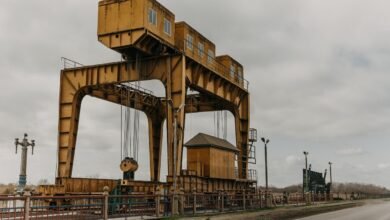bear head metal zippies door

Bear Head Metal Zippies Door are quickly becoming a popular option for homeowners and businesses alike. Whether you’re enhancing security, seeking durability, or simply wanting to make an architectural statement, these doors provide a cutting-edge solution. But what exactly are Bear Head Metal Zippies Doors? And why are so many people choosing them? This guide will walk you through everything you need to know—from the materials and construction to installation tips and long-term maintenance.
What Are Bear Head Metal Zippies Doors?
At their core, Bear Head Metal Zippies Doors are robust, metallic doors designed for enhanced security and style. They are constructed with advanced metal zipping technology that ensures high durability and seamless locking mechanisms while also offering modern designs to elevate the aesthetic appeal of any space.
Known for their steadfast performance, these doors strike a balance between form and function. But what truly sets them apart is their versatility—they can be used across commercial, industrial, and residential spaces, providing reliable protection while complementing modern interior or exterior design trends.
Understanding the Materials and Construction
Bear Head Metal Zippies Doors utilize a combination of high-quality metals and innovative craftsmanship. Here’s what makes their materials and construction stand out:
Premium Metals
Most Bear Head Metal Zippies Doors are crafted using stainless steel, aluminum, or galvanized iron. These metals are known for their strength, corrosion resistance, and longevity.
Key Features:
- Stainless Steel: Resistant to rust and corrosion, ideal for outdoor installations.
- Aluminum: Lightweight yet durable, perfect for modern minimalist aesthetics.
- Galvanized Iron: Coated for added durability, making it suitable for heavy-duty commercial use.
Unique Zipping Design
The metal zipping technique ensures that these doors provide a seamless locking mechanism, making them virtually unbreakable and extremely sturdy.
Reinforced Frames
Their construction includes reinforced metal frames that reduce warping and sagging over time, ensuring the door retains its shape even after years of use.
Insulation Options
For homeowners, some Bear Head Metal Zippies Doors come with built-in thermal insulation layers, making them energy-efficient by helping maintain indoor temperatures.
Benefits of Choosing Metal Zippies for Doors
Why should you choose Bear Head Metal Zippies Door over traditional wooden or plastic options? Here are the key benefits:
1. Unparalleled Durability
Metal zippies excel in durability compared to traditional doors. They stand up well against wear and tear, are immune to rot, and can endure extreme weather conditions, making them a perfect long-term choice.
2. Enhanced Security
Thanks to their robust zipping construction and reinforced frames, these doors offer heightened security, deterring unwanted entries and keeping your premises safe.
3. Minimal Maintenance
Unlike wood, which may need frequent polishing or repairs, metal doors require relatively little upkeep. Occasional cleaning and oiling of hinges are enough to keep them in perfect condition.
4. Aesthetic Versatility
Modern versions of Bear Head Metal Zippies Doors come in sleek designs, with customizable finishes and colors to match any architectural style or personal taste.
5. Cost-Effective
While the upfront cost might be higher, their longevity and minimal maintenance needs make them a cost-effective investment over the long run.
Installation Guide: Step-by-Step Instructions
Installing a Bear Head Metal Zippies Door is easier than you think. Here’s a simple step-by-step guide:
Step 1: Prepare the Door Frame
- Ensure the door frame is clean and level. Use a spirit level to confirm that the frame is straight.
- Check that the dimensions of the frame align with the measurements of the metal zippy door.
Step 2: Attach the Hinges
- Secure the hinges to the door frame using drill screws. It’s recommended to install at least three heavy-duty hinges for added stability.
- Carefully lift and position the door onto the hinges. Since these doors can be heavy, it’s best to have one or two people assist you.
- Install and test the locking mechanism to ensure it aligns perfectly with the frame. Adjust if necessary.
- Conduct a final inspection. Ensure the door opens and closes smoothly and is properly secured.
Pro Tip: Hire a professional if this is your first time working with heavy doors. It’s worth the extra safety and precision.
Maintenance Tips for Longevity
To get the most out of your Bear Head Metal Zippies Door, here are some essential maintenance tips:
- Clean Regularly:
-
-
- Use a mild soap-water solution and a soft cloth to prevent dust and grime buildup.
- Avoid abrasive cleaning materials that can scratch the finish.
-
- Inspect and Lubricate Hinges:
-
-
- Lubricate the hinges annually to ensure smooth operation.
- Regularly check for any loose screws or signs of wear.
-
- Protect Against Corrosion:
-
-
- For outdoor installations, apply a protective coating or wax annually to keep rust at bay.
-
- Check Locks:
-
-
- Test the locking mechanism periodically to ensure it works flawlessly.
-
Addressing Common Concerns and FAQs
Are Metal Zippies Doors Noisy?
Not at all! Thanks to their advanced design and insulation options, these doors operate smoothly and without unnecessary noise.
Can They Be Customized?
Yes! From finishes to colors and even embossed designs, Bear Head Metal Zippies Doors offer plenty of customization options to suit your preferences.
Are They Eco-Friendly?
Many manufacturers use recycled metals and sustainable processes, making these doors a more eco-conscious option compared to others.
Do They Work for Small Spaces?
Absolutely! Slim-profile designs are available for compact areas while still delivering the same durability and security.
Why Bear Head Metal Zippies Doors are the Perfect Choice
Bear Head Metal Zippies Doors are the ultimate combination of style, security, and reliability. Their unmatched durability, low-maintenance requirements, and versatility make them a fantastic choice for any home or business. Whether you’re seeking to enhance your property’s security or looking for an upscale architectural addition, Bear Head Metal Zippies Doors deliver on all fronts. Don’t settle for ordinary—upgrade to extraordinary.
Consider your next step—explore our collection of premium Bear Head Metal Zippies Doors today. Transform the way you experience security and design.




